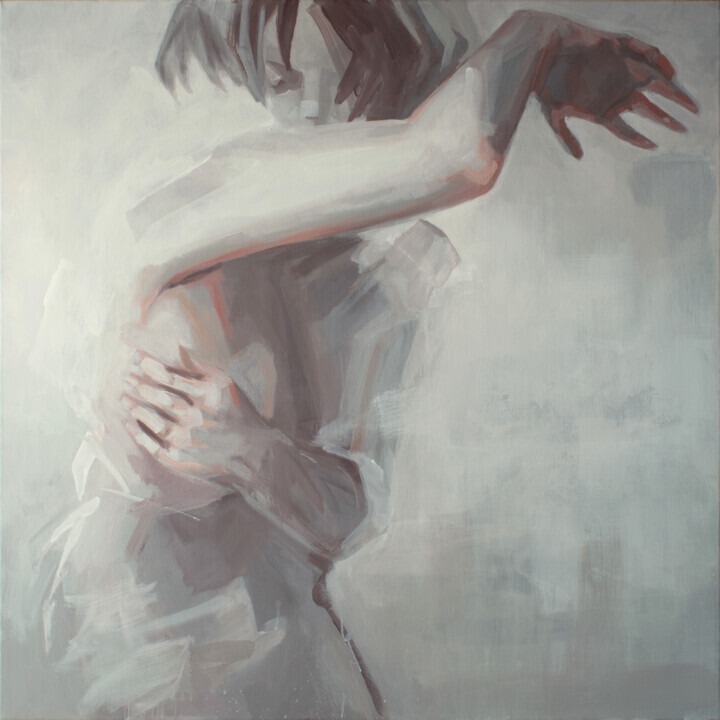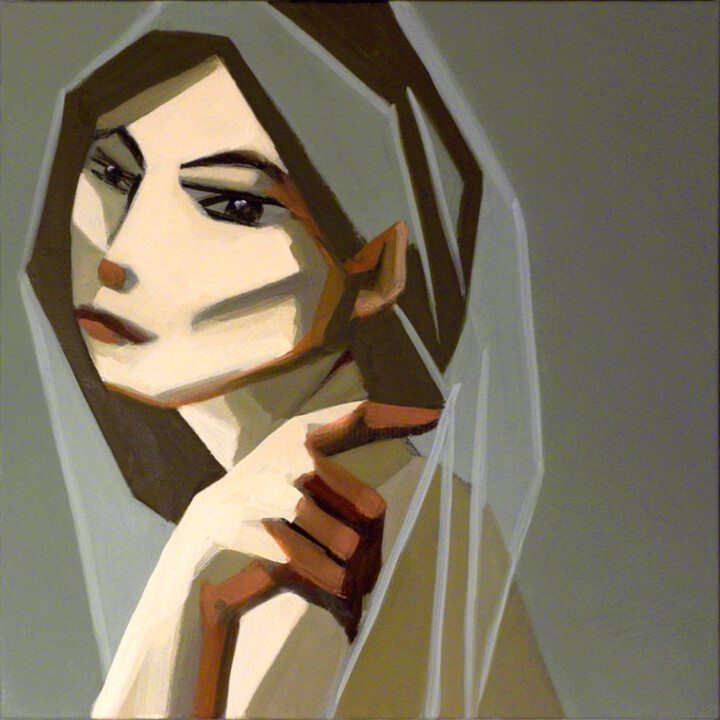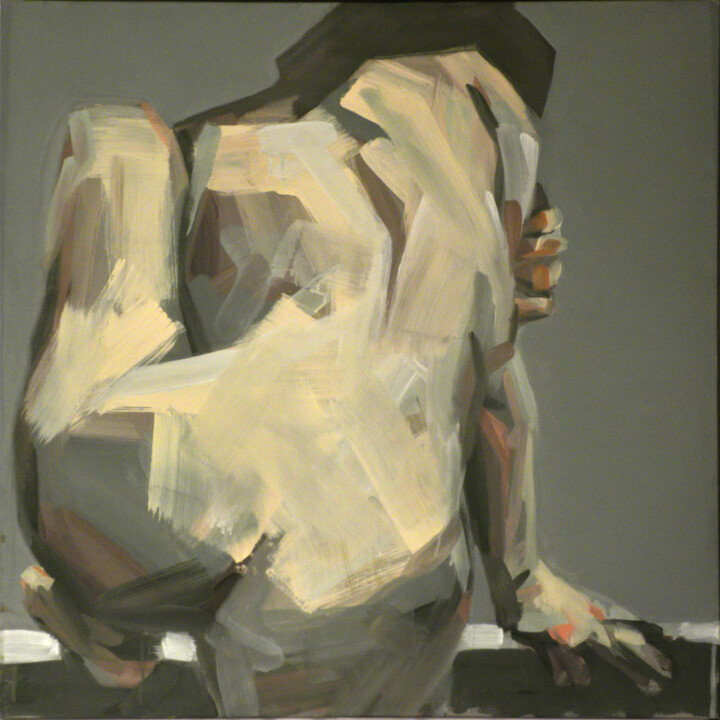What prompted you to create art and become an artist (events, feelings, experiences...)?
In the beginning it was not a deliberate decision, I just followed up (or was pursued by) an involuntary and spontaneous aptitude that manifested itself in childhood with drawing, before I could even conceive of words like "art." Then as I grew up this predisposition was directed toward the practical applications of graphic design and visual communication in general. Only later, as a result of reflections on the photographic medium that had meanwhile become my profession, did I turn very much to purely "artistic" research.
What is your artistic background, techniques and subjects you have experimented with so far?
My formative experiences were graphic design and especially photography practiced in an era that was still totally analog where people still worked only handcrafted. Then came the pixel (which was also the subject of investigation in the eponymous series of "transmedia" images made in 1996)* and with it photoshop and that is the end of an era.
I experimented transversally with different possibilities eventually finding synthesis in oil painting and the square format derived from photographic experience since I favored the 6x6. In this square anything can happen since I proceed by intuition and therefore there is no illustration of a subject, but the theory of a photographic composition immersed in the expressiveness of gesture and pictorial effect, returning to the elementary manuality of drawing and painting devoted to figuration. After a few years of experimentation I remained focused on the phenomenology of organic, animal and bodily matter immersed in a timeless dimension. But more conceptually understood, the underlying subject is traditional visual art itself, in the totality of its baggage that I reinterpret through the sensations, moods, fascinations (always changing) that pass through me, here and now. Lately I have been trying to investigate some possible ideality in search of a harmonious balance between matter and spirit.
What are the 3 aspects that differentiate you from other artists, making your work unique?
Probably they could be the compositional balance learned in photography, the syncrasis of stylistic instances, that is, the fusion of the most disparate suggestions offered by the history of art, the calligraphic sign that is reminiscent of my experience as a graphic designer. But I believe that identity is manifested by the combination of several factors combined: it is indeed difficult to commercialize because it does not reiterate a cliché evident at first glance, and perhaps it depends on this that a characteristic that unites my collectors and admirers is their deep visual culture free of prejudice.
Where does inspiration come from?
From instinct, from the subconscious, from intuition. They are visual intuitions. I undergo the observation of a myriad of images, often completely random and chaotic. Then by intuitive process I let my subconscious process their synthesis and conceive a completed and original image, designed and developed then as a work.
What is your artistic approach? What visions, sensations or feelings do you want to evoke in the viewer?
I seek authenticity. I avoid the rhetoric of "contemporary" even though I inquire about it, that is, I favor a timeless approach, prescinding from current events. I observe, respect and try to innovate tradition without, however, giving in to the nostalgic anachronism of traditionalism. I follow and trust only my instincts, my moods, evoking visions. It would please me that the viewer can be challenged by the images and traversed by their pictorial expression.
What is the creative process of your works? Spontaneous or with a long preparatory process (technique, inspiration from art classics or other)?
Originally there is the drawing in which visual intuitions are translated into sign, studied and composed into lines and volumes, as it might be for a musical score. This is then summarily brought back to the canvas where the composition is executed with the plastic energy of painting allowing me very spontaneous, instinctive gestures because they are freed from the search for previously drawn shapes and volumes.
Do you use a particular working technique? If yes, can you explain it?
I favor oil on canvas, that is, the most traditional technique possible : precisely because it is taken for granted and unoriginal, I consider it the best solution to focus attention on the sign and intellectual research of my work. I do not use oil for the softness of a realistic reproduction, but for its plasticity and the very wide range of color tones.
Are there innovative aspects to your work? Can you tell us what they are?
The innovation I seek consists in the approach : I have chosen manuality and simplicity as subversive and antithetical to technology : mine is an adventure in which I express animal and organic intelligence, an existential journey in which the product, the work, is its episode, document and unique testimony. There are in fact no titles, but numbers.
Do you have a format or medium with which you feel most comfortable? If so, why?
The square.
Ten years of photography practiced daily is an experience that inexorably influences The act of framing is already a creative choice and I favored the square format.
Symbolically, too, it is a rational structure where the horizontal line, the gaze of immanence and space-time reference, has the same value, the same length as the vertical line, that is, the sense of transcendence and spirituality. Figuration and its drives contained in this "hortus conclusus," are released in this scene where the cadence of signs is combined and arranged.
Where do you produce your works? At home, in a shared studio, or in your own studio? And in this space, how do you organize your creative work?
I work where I live although not necessarily in my home. Rather I adapt to living where I work because I need to be free to be able to intervene in what I am doing at any time. I have worked in many places and wherever I have worked and lived for a period of time I have almost always managed to make the spaces coexist harmoniously since I do not separate work from my daily living.
Does your work lead you to travel to meet new collectors, for fairs or exhibitions? If so, what do you get out of it?
No. Eventually it leads me to travel for residencies.
How do you see your work and your career as an artist developing in the future?
I would just like to give my work some continuity by developing it consistently with the path taken because I have a great desire to see where you get to by following this principle of intuition and instinct guided by the experience of the eye. It would be important to be able to have my work interpreted not on the basis of individual works but (according to the principles of gestalt theory) on the perception of the whole rather than in the formal solutions of each individual "visual episode." A solo anthology would reveal this.... Perhaps, someday...
What is the theme, style or technique of your latest artistic production?
In the cycle "Let it be" (2022) I move in a more mental and less organic dimension than in the past, where I search through signs, images that speak to the subconscious. Psychic atmospheres bordering on a vague spirituality however certainly secular.
I then plan a cycle on the evanescence of bodies and female psychology and another in which I will move around the theme of landscape. But surprises and deviations are always possible and considered if not also desired.
Can you tell us about your most important exhibition experience?
In 2014 I was invited to a residency by DaWang Culture Highland in Shenzhen, China. It is not well known in Europe how much painting and painters are regarded in China : they are celebrities, and although with very different characteristics there is there a thousand-year-old tradition there that is much older than in Europe.
At the end of the three-month residency there was an exhibition of the work done. The space was immense and the eye was lost in it. So I set to work madly with the intention of completing a cycle of 30 canvases in which I could do nothing but sincerely manifest all my Westernness, alien in that context. I managed to finish 21 of them and they were distributed radically in the exhibition space.
The vernissage, as is customary in China, was scheduled for early afternoon in late August. With 38 degrees of humid heat, I lingered in my room under the shelter of the air conditioning to try to get to the audience as cool as possible.
When I am on the large forecourt in front of the gallery, I notice strange movements and a certain agitation from which a military truck emerges : the police. With the young interpreter in tears and me not understanding what was going on they wanted to question me. As I was responding to the policeman in plain clothes and with a pass to my chest from which a large red star was silhouetted, I saw one of the policemen lowering the portcullis of the access to the gallery. From that I began to lose my composure, but before the irreparable happened I was pulled away by the (British) art director who warned me that I was risking a week in jail and the seizure of the works, and that if that had not already happened it was by virtue of the fact that I was not Chinese....
Eventually the exhibition was censored (I can only suspect for reasons of public modesty but I was not allowed to ask questions) .
If you could create a famous work of art history, which one would you choose? And why?
Jusepe de Ribera's Apollo and Marsyas.
Having lived in Naples I have had the opportunity to be able to admire it several times and I know all its visual power. It is in my opinion a very high moment of painting where the very studied scenic composition is made vivid by the fast, vibrant brushstrokes that make the anatomies palpitating, organic. The rendering of chiaroscuro is a masterpiece of depth; the drapery of Apollo's cloak is then in itself a work of timeless fascination. It cannot be forgotten.
If you could invite a famous artist (living or dead) to dinner, who would it be? How would you suggest spending the evening with them?
I would have liked to be able to spy in the presence of Gian Lorenzo Bernini as he sculpted Apollo and Daphne, but of the famous artists (more dead than alive) I take their best from their works.
I would rather spend evenings with the few people I love.







 Olimpia Gaia Martinelli
Olimpia Gaia Martinelli












